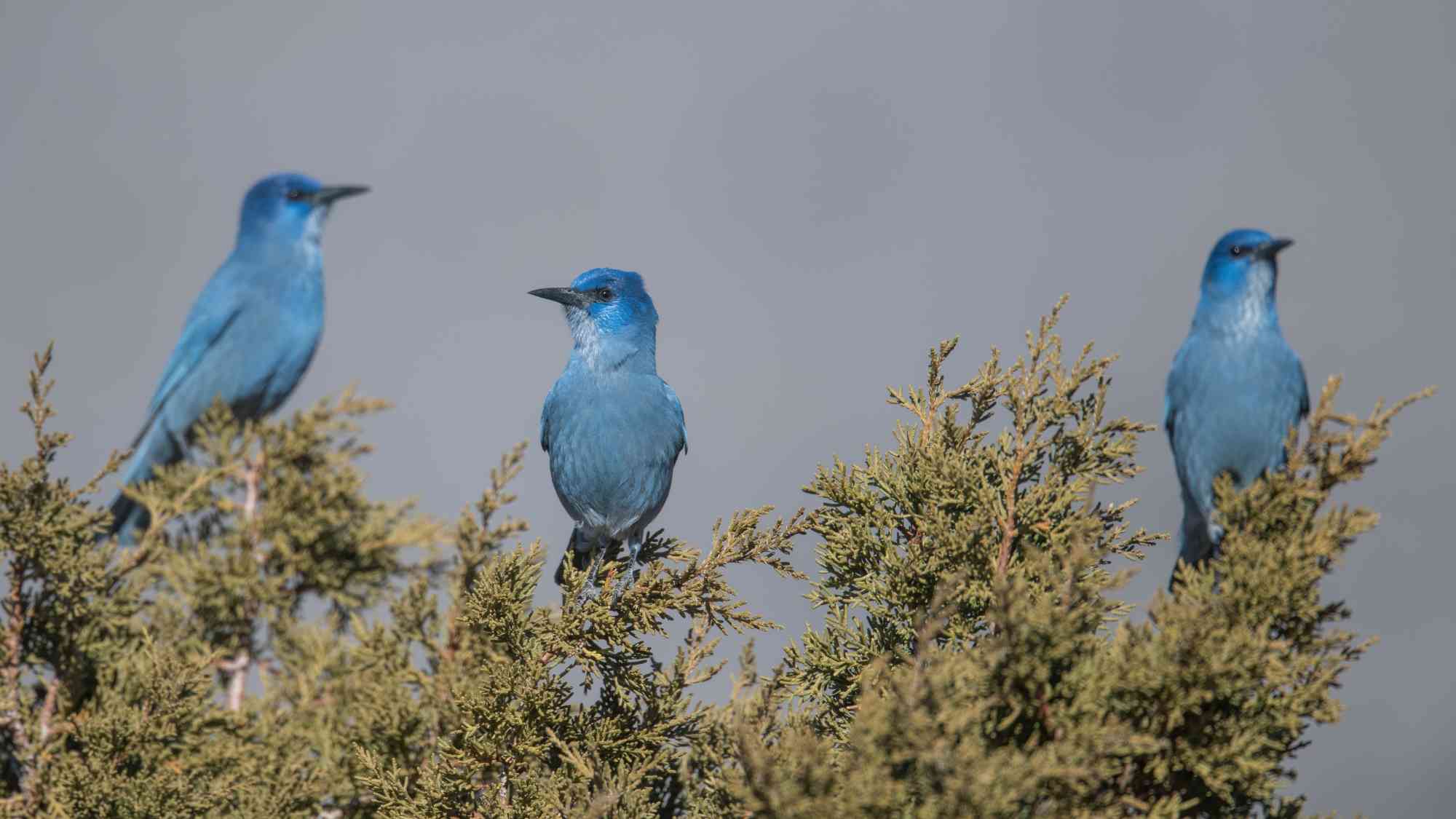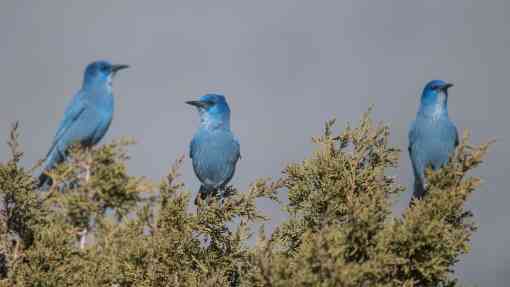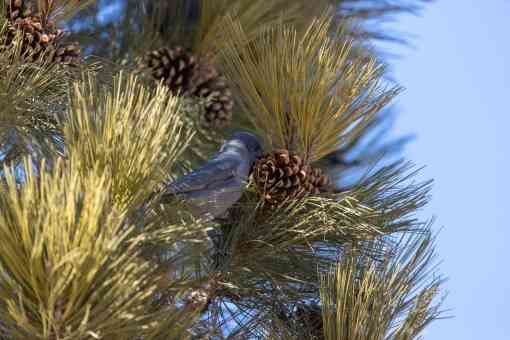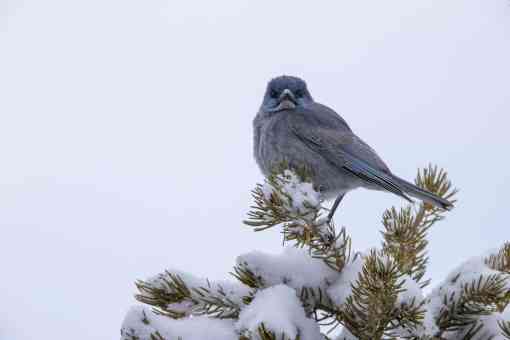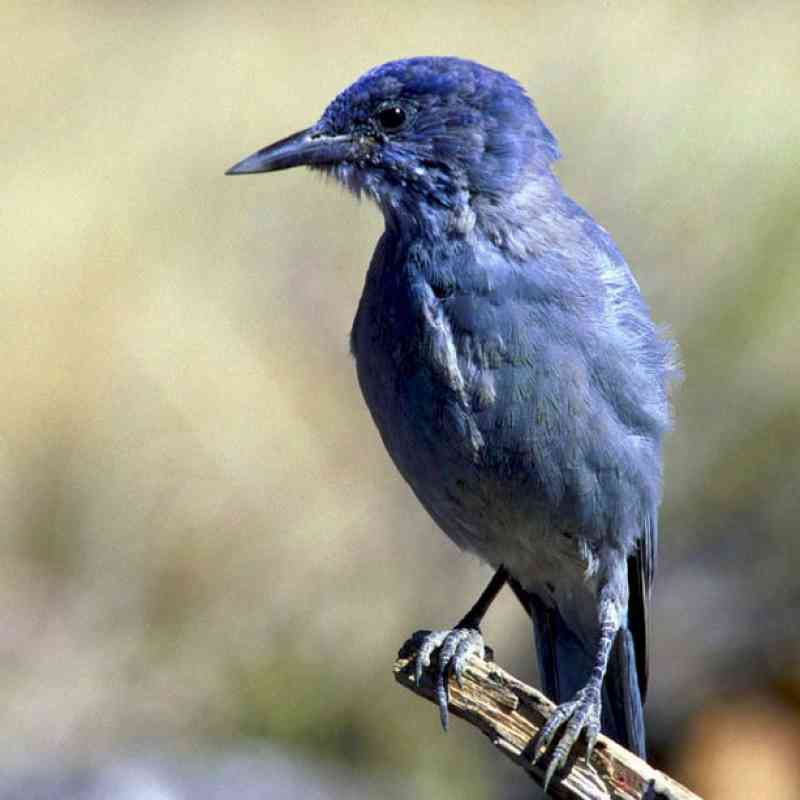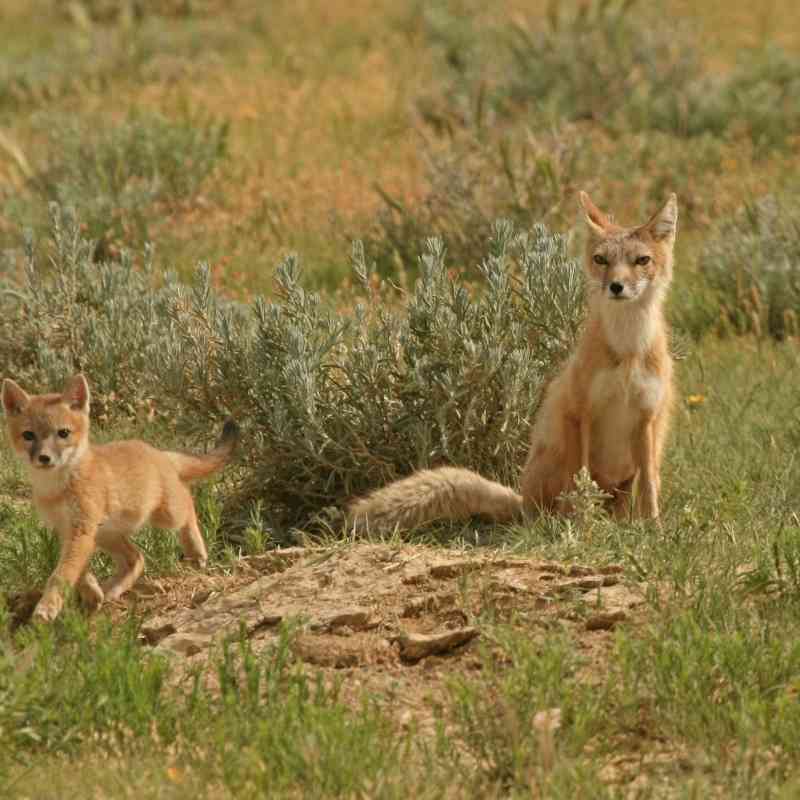Triage. It’s not what typically comes to mind when someone mentions wildlife conservation, but it’s become a recurring theme in how conservation is approached. Like emergency rooms, priority is often given to the direst of situations. Luckily, conserving some unique keystone creatures helps us to conserve many others.
The beautiful, dusky blue pinyon jay is one of these special species. Piñon-juniper woodlands, and the many animals and plants that depend on them, need the pinyon jay for its role as a seed disperser, helping to plant piñon pine trees. Piñon nuts are a staple in southwestern cuisine and are important to many cultures, including Native American Tribes and Hispanic communities. Collecting piñon pine nuts is a time-honored tradition for many families in the west. Plus, a trip through the Southwest would not be complete without a stop at a roadside stand selling roasted piñon pine nuts!
Since the 1960s, more than 85% of the pinyon jay population has, unfortunately, been lost spelling trouble for piñon-juniper ecosystems. Pinyon jays eat many things, but their primary food is piñon pine seeds or nuts. Piñon pines only produce seeds every three or more years, and when they do, they produce large amounts throughout woodlands and beyond. Pinyon jay flocks will traverse across landscapes looking for piñon pines with seeds. When they find seeds, pinyon jays collect as many as possible and stash them to eat later. A single pinyon jay can squeeze 50 or more piñon pine seeds into its expandable esophagus!
In a good seed year, one pinyon jay can collect and cache up to 2,600 seeds. These seeds are usually stashed in the ground. While pinyon jays are amongst the smartest birds and can remember where most of their seeds are hidden, they inevitably forget where some are cached and inadvertently plant piñon pine trees. No other animal plants as many piñon pine trees as the pinyon jay!
Because of this symbiotic relationship between pinyon jays and piñon pines, if one population declines, so does the other. Climate change has increased the strain on both species’ survival, as increasing temperatures and droughts have contributed to killing piñon pines and decreased seed production. With fewer seeds, there’s less food to support pinyon jay population; with fewer pinyon jays there are less seed dispersers, causing a downward spiral toward extinction and ecological collapse. There is hope, however, as private landowners — regardless of the size of their land — can help pinyon jays!
To counteract the negative impacts from climate change, landowners have the power to support piñon pine growth by increasing watering, mulching and controlling erosion. These actions provide cooler soil and more moisture so piñon pines can produce more seeds. With more seeds, pinyon jays can survive and plant more piñon pines. This upward spiral will ensure a bright future for landowners, plants and animals alike.
Defenders of Wildlife is spreading the word on these simple actions and Southwest landowners can do the same by using this helpful resource guide. Private landowners could end up being the pinyon jays’ salvation, so let’s work together to give these birds their best chance.
Author

Peggy Darr
Areas of Expertise: Ornithology; imperiled species conservation; Pinyon Jay conservation; beaver management and coexistence; southwest warbler conservation; ponderosa pine forest, mixed-conifer forest, and piñon-juniper woodland
comments
Wildlife & Wild Places

